
Nuclear Medicine and Molecular Imaging
Scope & Guideline
Exploring the Intersection of Technology and Patient Care
Introduction
Aims and Scopes
- Molecular Imaging Techniques:
The journal emphasizes advancements in molecular imaging techniques such as PET, SPECT, and hybrid imaging modalities (e.g., PET/CT, PET/MRI) to enhance diagnostic accuracy and therapeutic monitoring. - Radiopharmaceutical Development:
Research on the synthesis, optimization, and clinical applications of novel radiopharmaceuticals is a core focus, aiming to improve imaging and targeted radiotherapy outcomes. - Clinical Applications and Case Studies:
The journal publishes clinical studies and case reports that demonstrate the application of nuclear medicine technologies in real-world scenarios, providing insights into patient management and treatment strategies. - Artificial Intelligence and Machine Learning:
There is a growing focus on the utilization of artificial intelligence and machine learning techniques in nuclear medicine, particularly in image analysis, disease detection, and improving diagnostic workflows. - Theranostics in Oncology:
The journal explores the integration of diagnostic imaging and therapeutic approaches (theranostics), particularly in oncology, to personalize treatment based on imaging findings.
Trending and Emerging
- Artificial Intelligence Applications:
Recent publications highlight a significant increase in research related to the application of AI and machine learning in nuclear medicine, particularly for image processing, diagnostic accuracy, and workflow optimization. - Neuroimaging Advances:
There is a growing trend towards exploring neuroimaging techniques, especially in relation to neurodegenerative diseases and psychiatric conditions, reflecting an increased awareness of the role of neuroimaging in clinical practice. - Radioligand Therapy Innovations:
The journal has seen a rise in studies discussing innovative radioligand therapies, particularly for prostate cancer and neuroendocrine tumors, indicating a shift towards personalized medicine approaches. - Integration of Multimodal Imaging:
Emerging themes include the integration of multimodal imaging approaches, combining various imaging techniques to provide comprehensive insights for accurate diagnosis and treatment planning. - Imaging Biomarkers in Disease Monitoring:
There is an increasing focus on identifying and validating imaging biomarkers for monitoring disease progression and treatment response, which is crucial for personalized medicine.
Declining or Waning
- Traditional Imaging Techniques:
There has been a noticeable decrease in studies focusing solely on traditional imaging techniques without the integration of molecular or advanced imaging modalities, as the field moves towards more sophisticated approaches. - Basic Radiobiology Studies:
Research centered on the fundamental aspects of radiobiology appears to be less frequently published, possibly overshadowed by more applied studies that combine imaging with therapeutic applications. - Single-Agent Radiotherapy:
The focus on single-agent radiotherapy without combination therapies has diminished, with a shift towards exploring multi-modal therapies that enhance efficacy and reduce side effects.
Similar Journals
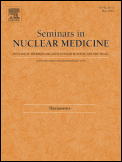
SEMINARS IN NUCLEAR MEDICINE
Transforming nuclear medicine through high-quality discourse.Welcome to Seminars in Nuclear Medicine, a prestigious journal published by W B Saunders Co-Elsevier Inc that has been at the forefront of the field since its inception in 1971. This journal serves as a dedicated forum for researchers, healthcare professionals, and students specializing in the rapidly evolving areas of radiology and nuclear medicine. With an impressive ranking of #29 out of 333 in the Scopus category, drawing an esteemed 91st percentile, it holds a distinguished Q1 category status, highlighting its critical role in disseminating high-quality research and clinical practices. Although it does not operate as an Open Access publication, Seminars in Nuclear Medicine remains a vital resource, featuring comprehensive reviews and insightful articles that inform the medical community about the latest advancements and applications within nuclear imaging. This journal not only enhances knowledge but also encourages collaboration among professionals dedicated to improving patient outcomes through innovative nuclear medicine techniques.
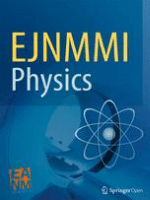
EJNMMI Physics
Elevating Knowledge in Medical Physics and Imaging Technologies.EJNMMI Physics, the premier journal for advancements in nuclear medicine and imaging, is published by Springer in Switzerland and has been an open-access outlet since 2014, allowing for broad dissemination of critical research findings. With an ISSN of 2197-7364, the journal aims to bridge the gap between state-of-the-art physics and practical applications in biomedical engineering and radiology. Its impressive Q1 ranking in multiple categories, including Biomedical Engineering, Instrumentation, Radiation, and Radiology, Nuclear Medicine and Imaging, exemplifies its significant impact in the field. The journal boasts exceptional metrics with Scopus rankings placing it in the top echelons across disciplines, including a 6th position out of 58 in Radiation, and serves as an essential resource for researchers, professionals, and students who are eager to contribute to and stay informed about cutting-edge scientific advancements. With a broadening scope until 2024, EJNMMI Physics is an indispensable tool for those dedicated to pushing the boundaries of knowledge in medical physics and imaging technologies.

Molecular Imaging and Radionuclide Therapy
Elevating the standards of molecular imaging research.Molecular Imaging and Radionuclide Therapy is an esteemed academic journal published by GALENOS PUBL HOUSE, dedicated to advancing the fields of radiology, nuclear medicine, and imaging. Since its inception, this Open Access journal has facilitated the dissemination of high-quality research and innovative practices in molecular imaging and radionuclide therapy, making it a vital resource for researchers, professionals, and students alike. With an ISSN of 2146-1414 and an E-ISSN of 2147-1959, the journal has established its presence globally while specifically catering to the Turkish academic and medical community. As of 2023, it is ranked #241/333 in the Radiology, Nuclear Medicine and Imaging category on Scopus, holding a respectable Q3 quartile ranking. The journal serves as a platform for sharing impactful findings from 2017 to 2024, reinforcing its commitment to open access since 2011. With a dedication to enhancing the knowledge base in molecular imaging and therapy, it remains an important conduit for scholarly communication and collaborative research developments in this dynamic field.

NUCLEAR MEDICINE REVIEW
Championing Excellence in Radiology ResearchNUCLEAR MEDICINE REVIEW is a distinguished journal in the field of radiology, nuclear medicine, and imaging, published by VIA MEDICA in Poland. Since its transition to an open access format in 1999, this journal has been dedicated to promoting the dissemination of knowledge and research findings across a global audience. With a focus on innovative approaches and advancements in nuclear medicine, it aims to serve as a key resource for researchers, professionals, and students who are working to further the understanding of nuclear imaging and its applications. In 2023, the journal was classified in the Q3 category within Radiology, Nuclear Medicine and Imaging, and Q4 in the broader category of Medicine (miscellaneous), highlighting its growing reputation in the academic community. As of the latest assessments, the journal has been ranked #235 out of 333 in its field according to Scopus metrics, reflecting its commitment to excellence and the relevance of its published works. The NUCLEAR MEDICINE REVIEW is a pivotal platform for those engaged in cutting-edge research, providing insights that drive the evolution of medical imaging and therapeutic techniques.

Imaging
Empowering Collaboration in Medical ImagingImaging, published by AKADEMIAI KIADO ZRT, is an esteemed open-access journal dedicated to the field of medical imaging, established in 2020. With an E-ISSN of 2732-0960 and based in Budapest, Hungary, this journal provides a vital platform for the dissemination of cutting-edge research and advancements in imaging techniques, especially in the realms of radiology, nuclear medicine, and ultrasound technology. While currently positioned in the Q4 category across multiple medical specialties, the journal continues to strive for improvements in visibility and impact, contributing to the evolving discourse in medical imaging. The journal aims to facilitate an inclusive and collaborative environment for researchers, professionals, and students, inviting them to share their findings and insights to enhance the field's development. With open-access availability since its inception, Imaging ensures free and easy access to its content, fostering a greater understanding and appreciation of innovative imaging practices worldwide.
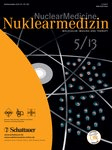
NUKLEARMEDIZIN-NUCLEAR MEDICINE
Connecting Research and Clinical Excellence in Nuclear Medicine.NUKLEARMEDIZIN-NUCLEAR MEDICINE is a prestigious journal published by Georg Thieme Verlag KG, focusing on pivotal advancements in the fields of Nuclear Medicine, Radiology, and Imaging. Established in 1959, this journal has served as a critical platform for disseminating innovative research, reviews, and clinical guidelines until its anticipated convergence in 2024. With an ISSN of 0029-5566 and an E-ISSN of 2567-6407, NUKLEARMEDIZIN is acknowledged in the academic community as a Q3 category journal within Medicine (miscellaneous) and Radiology, Nuclear Medicine, and Imaging as of 2023, highlighting its ongoing contribution to the interdisciplinary dialogue in healthcare. Although the journal does not currently offer open access, it remains accessible to professionals and students through various academic databases, ensuring that cutting-edge knowledge in this growing field is shared widely. Researchers interested in the latest methods and technologies in Nuclear Medicine will find NUKLEARMEDIZIN a valuable resource for enhancing their work and understanding the complexities of modern imaging modalities.
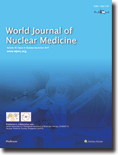
World Journal of Nuclear Medicine
Unlocking the Potential of Nuclear Medicine for AllWorld Journal of Nuclear Medicine, published by THIEME MEDICAL PUBL INC, is a premier peer-reviewed journal dedicated to advancing the field of nuclear medicine. With an Open Access model established since 2011, this journal ensures that high-quality research is accessible to a wide audience, fostering knowledge sharing and collaboration among researchers, clinicians, and students alike. The journal aims to publish innovative studies, reviews, and clinical trials that contribute significantly to both the theoretical and practical aspects of nuclear medicine, enhancing diagnostic and therapeutic techniques within this critical area of healthcare. As the journal continues to grow in visibility and impact, it remains an essential resource for those seeking to stay at the forefront of advancements in nuclear medicine.
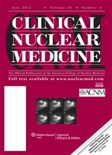
CLINICAL NUCLEAR MEDICINE
Navigating the Evolving Landscape of Nuclear MedicineCLINICAL NUCLEAR MEDICINE is a premier journal dedicated to the field of nuclear medicine, published by Lippincott Williams & Wilkins. With a history of excellence since its inception in 1978, the journal serves as a vital resource for researchers, healthcare professionals, and students seeking to deepen their understanding of this rapidly evolving discipline. The journal holds a commendable Q2 ranking in both Medicine (miscellaneous) and Radiology, Nuclear Medicine and Imaging, reflecting its significant impact on advancing clinical practices and research. While currently not offered as an open-access publication, CLINICAL NUCLEAR MEDICINE ensures rigorous peer review and high-quality publications, contributing to the broad dissemination of cutting-edge studies and reviews. With its comprehensive scope encompassing both diagnostic and therapeutic nuclear medicine applications, researchers around the globe turn to this journal to stay informed and inspire innovations in patient care for the years leading up to 2024 and beyond.
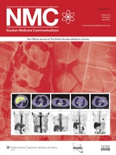
NUCLEAR MEDICINE COMMUNICATIONS
Exploring the Depths of Nuclear Medicine ResearchNUCLEAR MEDICINE COMMUNICATIONS is a prestigious academic journal published by Lippincott Williams & Wilkins, focusing on the multifaceted field of nuclear medicine and its applications in diagnostics and therapy. With a solid history spanning from 1980 to 2024, this journal provides a platform for peer-reviewed research articles, clinical studies, and innovative techniques that enrich the knowledge base within the fields of {{medicinal applications, patient care, and imaging technology}}. Currently classified in the Q3 quartile for both Medicine (Miscellaneous) and Radiology, Nuclear Medicine, and Imaging, the journal reflects its commitment to advancing healthcare practices. Although it does not offer open access options, its accessibility through reputable institutions promotes scholarly exchange among researchers, professionals, and students alike. The critical insights provided in NUCLEAR MEDICINE COMMUNICATIONS are essential for those dedicated to enhancing patient outcomes through cutting-edge nuclear medical technologies.

American Journal of Nuclear Medicine and Molecular Imaging
Illuminating the Path of Nuclear Medicine DiscoveriesThe American Journal of Nuclear Medicine and Molecular Imaging (ISSN: 2160-8407), published by E-CENTURY PUBLISHING CORP, is a distinguished platform for the dissemination of cutting-edge research in the fields of nuclear medicine and molecular imaging. With a commitment to advancing scientific inquiry and clinical applications, this journal serves as a vital resource for researchers, clinicians, and students dedicated to exploring innovative imaging modalities, radiopharmaceuticals, and their applications in diagnosing and treating various medical conditions. Although currently not available as an open-access journal, this publication plays a crucial role in fostering academic dialogue and collaboration within the medical community. Its diverse range of topics and expert contributions underscore its impact in bridging the gap between research findings and clinical practice, making it an essential read for anyone interested in the rapidly evolving landscape of nuclear medicine and imaging technologies.